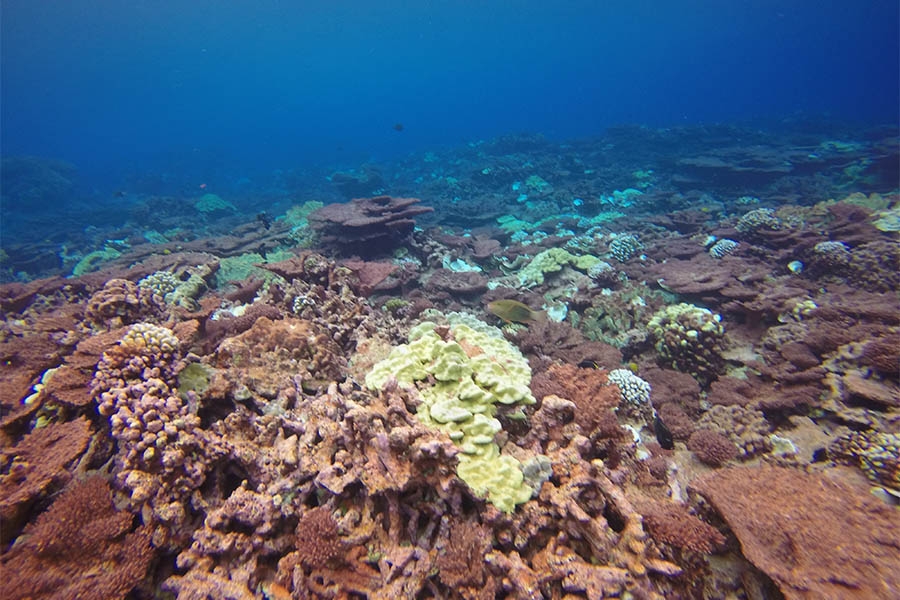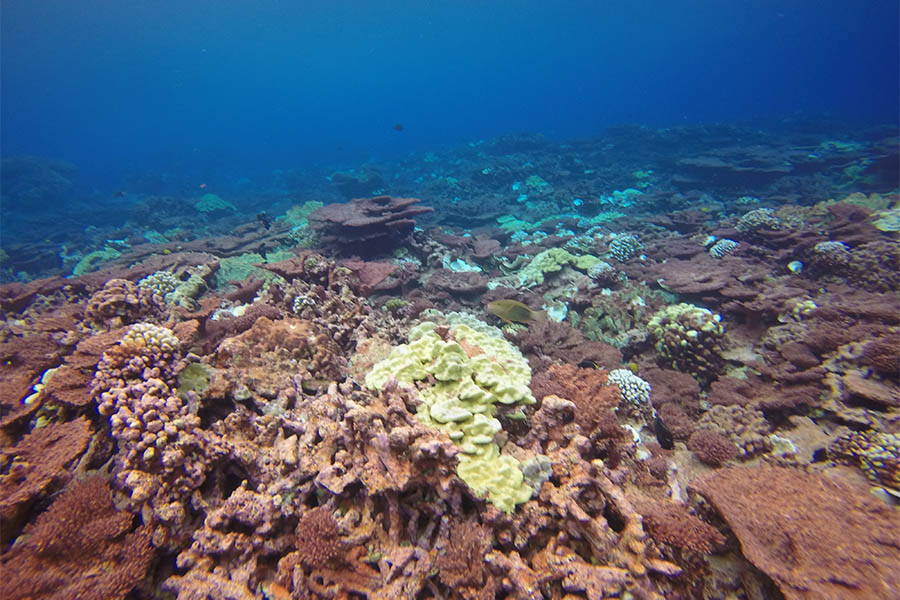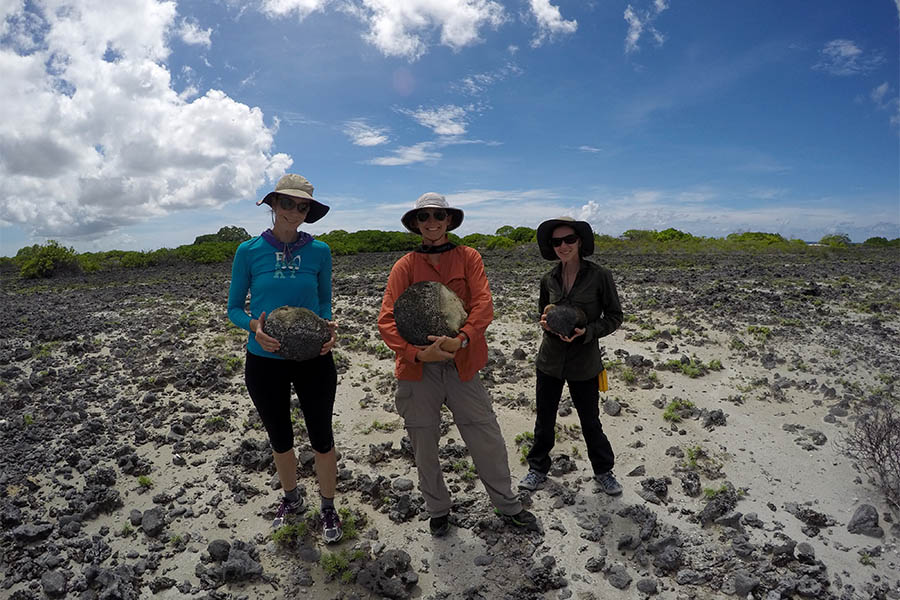
 A coral reef near Kiritimati Island. Through the Mundy Global Learning Endowment, senior Shellby Miller traveled to the island in March as part of her research project using coral species' chemical signals to track sea-surface temperatures. (Photo: Pamela Grothe) |
Senior Shellby Miller traveled to Kiritimati Island in March to collect coral samples for her undergraduate research project investigating whether scientists can use some coral species chemical signals to track sea-surface temperatures. “If I am successful with my project, I will provide the climate research community with an additional archive to use for climate reconstruction in a data-sparse region of the Pacific Ocean,” Miller said.
The environmental engineering and earth and atmospheric sciences dual major has been working with well-known climate scientist and coral researcher Kim Cobb in the School of Earth and Atmospheric Sciences on the project. But Miller has, until now, relied on others to collect her samples.
This is part of an ongoing series of essays from across the globe written by CEE students who have traveled abroad with the support of the Joe S. Mundy Global Learning Endowment.
 From left to right, Professor Kim Cobb, Ph.D. student Pamela Grothe and environmental engineering senior Shellby Miller on Kiritimati Island in March 2016. (Photo: Alyssa Atwood) |
Over the course of this field expedition, I became familiar with the island’s culture and participated in outreach activities that informed the island’s residents about the on-going effects of global climate change and about our research objectives.
Our group’s research focuses on characterizing natural climate variability of the tropical Pacific in order to identify trends of anthropogenic climate change, with a particular focus on El Niño variability. Dr. Cobb has pioneered the application of Kiritimati corals to reconstruct the long-term behavior of [the El Niño-Southern Oscillation], providing insight to both natural and anthropogenic climate changes in this under-sampled region.
Accurately predicting future climate change is critical for island nations, since warming of the world’s oceans is responsible for roughly half of the recent sea level rise documented by satellites. Island nations, such as the Republic of Kiribati, have to plan for evacuation before their living spaces are underwater, projected to occur within the next 100 years. In fact, the nation has already purchased land on the Fijian island, Vanau Levu, to allow for the evacuation of all its approximately 100,000 residents.
During our field expedition to Kiritimati Island, I gained perspective on how these residents have been affected by the last decades of rising ocean temperatures and sea level. It was life-changing to witness first-hand how first-world CO2 emissions are impacting the populations of less-developed countries.
Aside from the outreach projects on the island, which included making presentations to school-aged children in the island’s elementary and middle schools, I also assisted in updating our El Niño observation system, tagged and sampled corals to observe a possible massive bleaching event, collected fossil corals to add to our archive, and provided our local collaborators with more water sampling equipment.
I believe this experience added important context to my present and future research on climate change, both from a social as well as a technical dimension, equipping me with the perspective and skills I need to succeed as an aspiring scientist in climate change.
